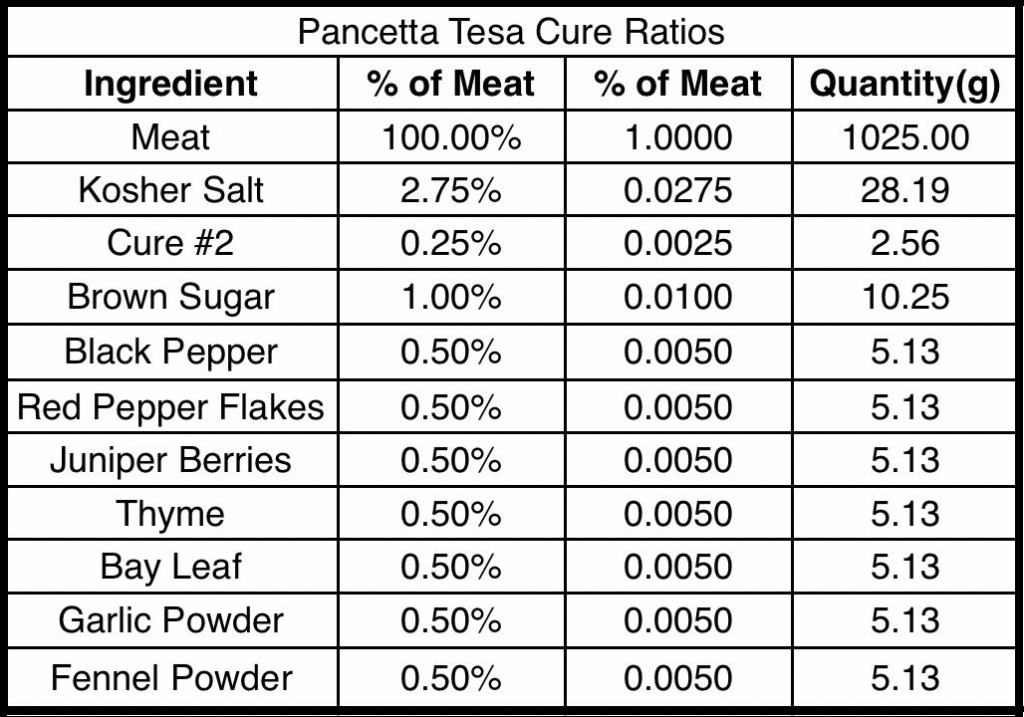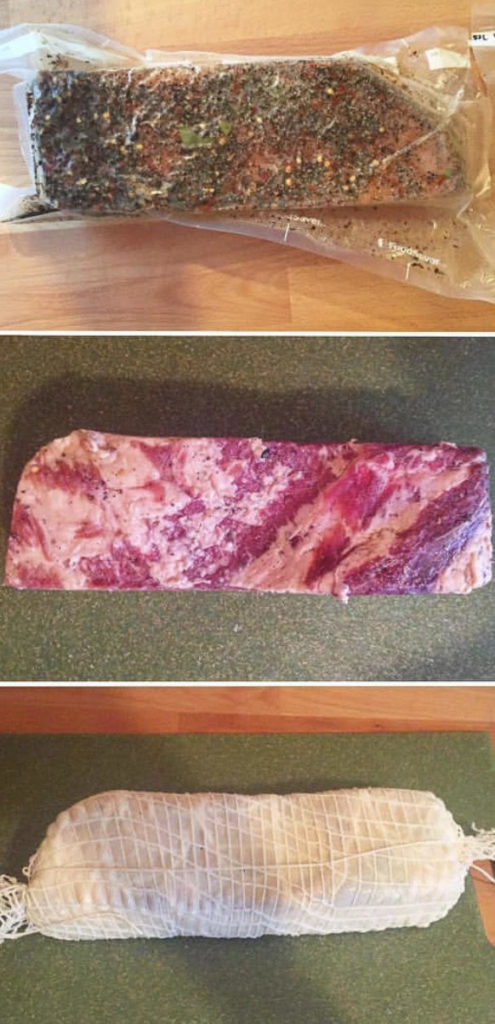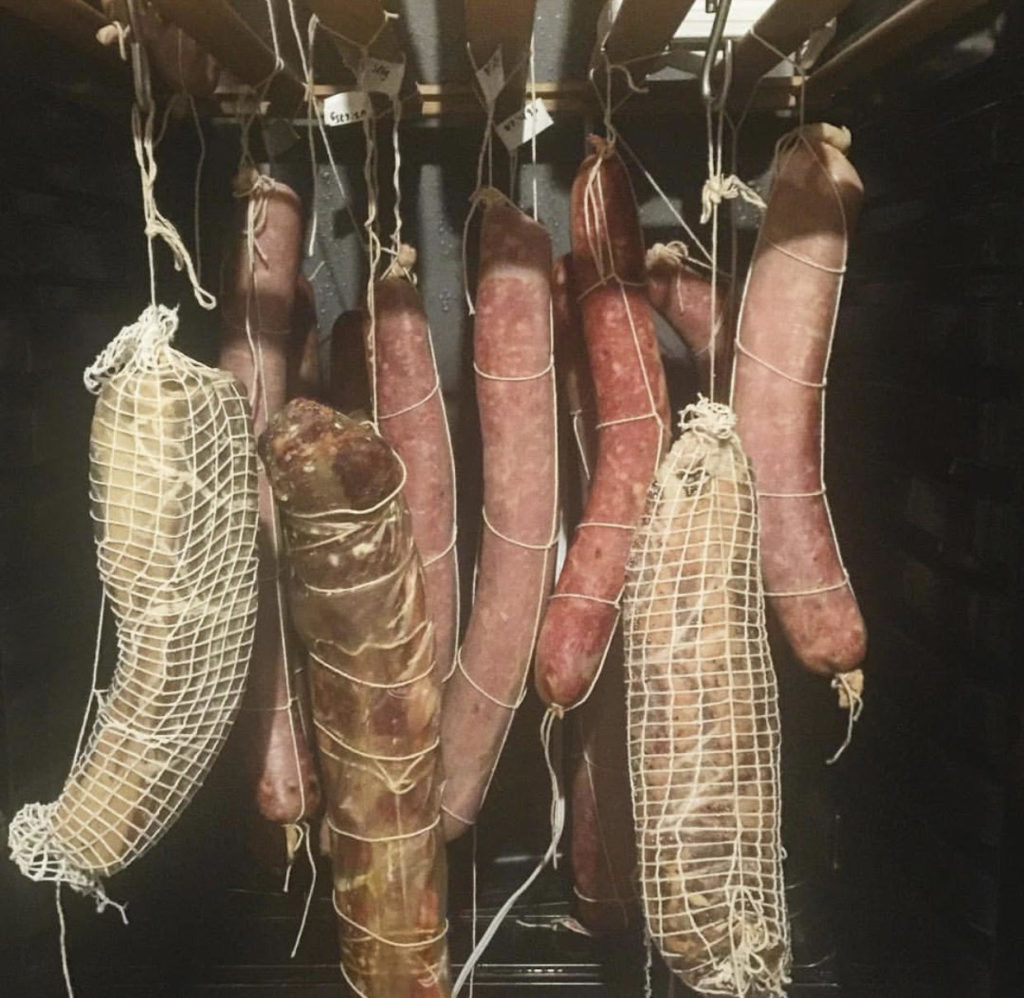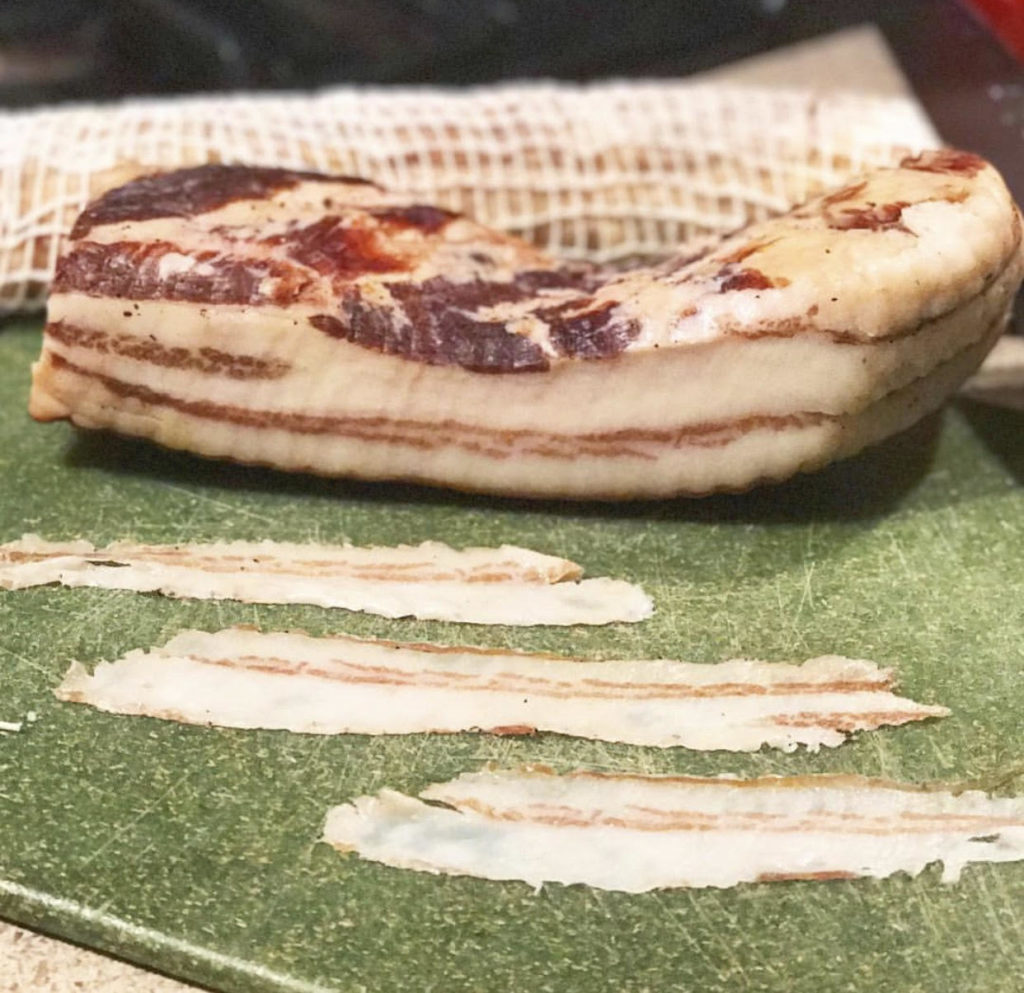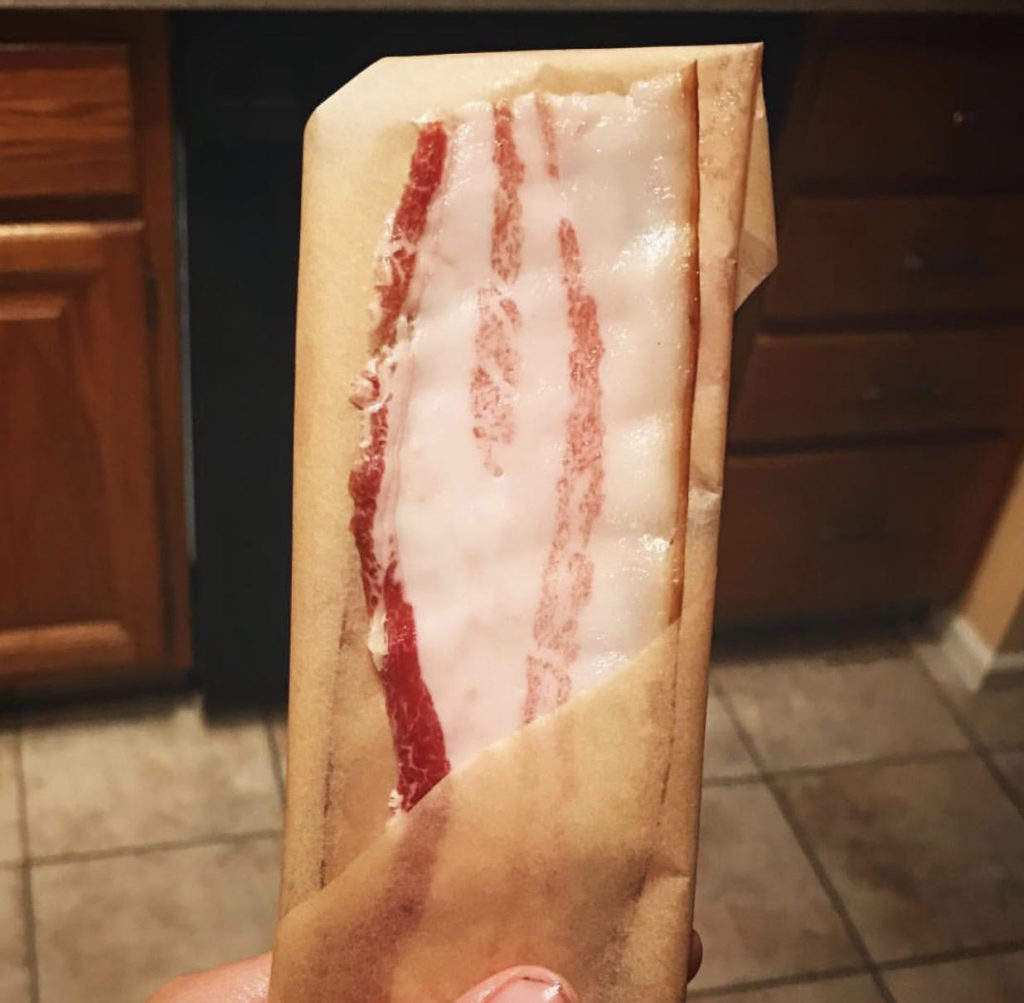Pancetta is a cured meat product made from pork belly. There are two major different types, which are then done in different styles based on regional differences. The two major types are semi-dried and fully-dried. The semi-dried is more similar to bacon. It is cured, and hung to dry for maybe a week or two. It is then stored in the fridge or freezer, sliced, and cooked before eating. The fully dried is cured, and hung to dry until it loses about 30% of its starting weight, which usually takes a few months. The fully-dried doesn’t need to be cooked to be eaten, but it can be if desired. The semi-dried uses Cure #1 like bacon does, and the fully dried uses Cure #2 like other dry cured meats.
Now, these are the two major types, but they are both done in many different styles in different regions. The most recognizable style is probably pancetta arrotolata, which is where the pork belly rolled to create a long round cured meat that is then hung to dry. When it is sliced, you get pretty circular slices. Another type that is made is pancetta tesa. This is the pork belly cured, allowed to stay flat, and hung. When it is sliced, you get long thin slices.
In this post, I will be talking about making pancetta tesa from an iberico de bellota pork belly.
Curing (2 weeks +):
The pork belly is put into an aromatic cure. It is allowed to cure for 2+ weeks.
Casing (1 hour+):
The meat is taken out of the cure, rinsed and dried, is cased in a beef bung, and netted to hang.
Drying (1 month+):
The meat is allowed to hang until it has lost 20-30% of its initial weight. Because this is a fattier cut, it’s won’t too surprising if it doesn’t lose the full 30%.
Tasting: When the meat is out of the curing chamber, slice it thin, and enjoy!
And don’t forget, you can always take some with you as a nice to-go snack!
Disclaimer: Meat curing is a hobby that comes with inherent risks. We can all do things to limit this risk by educating ourselves about the process and the utilizing the safest known methods to create our products. This website is for educational purposes only, and all experimentation should be done at each individuals own risk.

